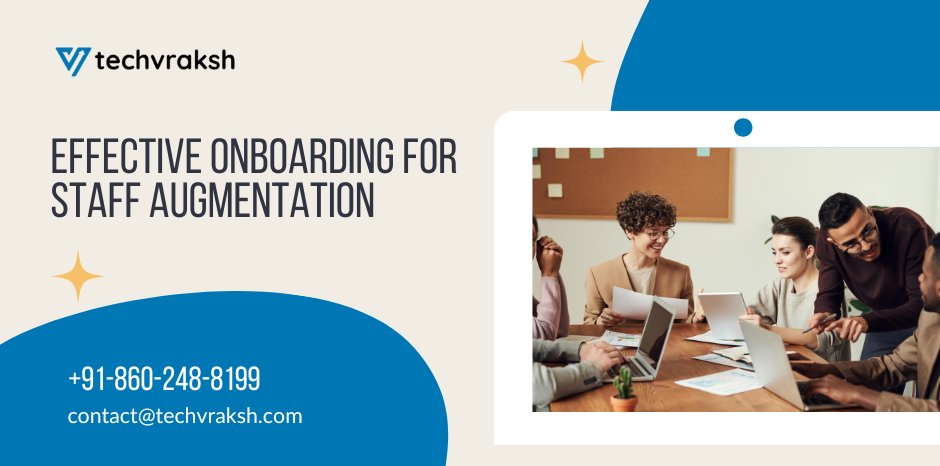Introduction
Staff augmentation has become a popular approach for businesses looking to fill skill gaps, meet project deadlines, and scale their operations. However, the success of this strategy heavily depends on how well the augmented team members are integrated into your existing workflows. This is where effective onboarding comes into play.
In this guide, we’ll walk you through the best practices for onboarding augmented staff, ensuring a smooth transition and setting the stage for optimal performance. Whether you’re bringing in developers, designers, or marketing experts, these tips will help you create an environment where your new team members can hit the ground running.
Why Effective Onboarding Matters
The onboarding process is crucial to aligning new hires with your company’s culture, processes, and expectations. For staff augmentation specifically, onboarding helps bridge the gap between external talent and internal teams, fostering collaboration and productivity from day one.
Poor onboarding can lead to confusion, misunderstandings, and lower morale. On the other hand, a structured and well-thought-out onboarding process can accelerate productivity, reduce turnover, and create a more cohesive team dynamic.
Step-by-Step Guide to Effective Onboarding for Staff Augmentation
1. Pre-Onboarding: Preparing for a Smooth Start
Before your augmented staff members even step into their roles, ensure that everything is in place for a seamless start.
- Create a Comprehensive Onboarding Plan: Outline the key tasks, timelines, and resources required for the onboarding process.
- Set Up Accounts and Access: Prepare login credentials, grant system access, and set up necessary software tools ahead of time.
- Communicate Expectations Clearly: Share the project’s scope, goals, and specific responsibilities of the new team members with both internal and external teams.
2. Introduce the Company Culture and Values
New team members should feel connected to your company’s culture and values. This step is especially important for augmented staff who may be working remotely.
- Organize a Welcome Session: Conduct a virtual or in-person orientation to introduce the company’s history, mission, and values.
- Assign a Buddy or Mentor: Pair new team members with a buddy or mentor who can guide them through their first few weeks and help them settle in.
3. Project Overview and Role Clarity
Staff augmentation often involves onboarding highly specialized talent for specific projects. Therefore, providing clarity about their role and the project’s context is critical.
- Project Kickoff Meeting: Conduct a detailed project overview, highlighting objectives, deadlines, and key milestones.
- Role-Specific Training: Offer role-specific training or documentation that covers the tools and processes they’ll be working with.
4. Streamline Documentation and Resource Sharing
Make sure that all relevant project documentation, such as technical specs, design assets, and communication channels, are readily accessible to new team members.
- Centralized Knowledge Base: Use a centralized platform like Confluence or Google Drive for easy access to all resources.
- Set Up Communication Channels: Establish communication channels on platforms like Slack or Microsoft Teams for real-time collaboration.
5. Encourage Team Interaction and Collaboration
One of the challenges of staff augmentation is ensuring seamless integration between new hires and your existing team. Facilitating interaction can create a stronger sense of belonging and improve collaboration.
- Schedule Regular Check-Ins: Organize weekly or bi-weekly check-ins to discuss progress, address concerns, and provide feedback.
- Encourage Social Interactions: Promote informal interactions through virtual coffee breaks or team-building activities to build camaraderie.
6. Monitor Progress and Gather Feedback
Continuous evaluation and feedback are essential for ensuring the success of augmented staff in their roles.
- Performance Reviews: Schedule periodic performance reviews to assess progress and address any roadblocks.
- Solicit Feedback: Gather feedback from both augmented staff and internal teams to identify any areas for improvement in the onboarding process.
Common Challenges in Onboarding for Staff Augmentation
While onboarding augmented staff can bring great value, it’s not without its challenges. Here are some common issues and how to address them:
- Lack of Role Clarity: Ensure that roles and responsibilities are clearly defined to prevent confusion.
- Integration with the Existing Team: Promote collaboration and open communication to break down silos.
- Remote Work Constraints: Use project management and communication tools effectively to bridge the gap.
Tools to Facilitate Effective Onboarding
Several tools can simplify the onboarding process for staff augmentation:
- HR Management Tools: Platforms like BambooHR and Workday help manage onboarding tasks and track progress.
- Project Management Tools: Use Asana or Jira to assign tasks, set deadlines, and monitor project milestones.
- Communication Platforms: Slack, Microsoft Teams, and Zoom facilitate seamless communication, whether remote or in-office.
Conclusion
An effective onboarding process is a critical component of successful staff augmentation. By implementing a structured and welcoming onboarding experience, businesses can ensure that augmented staff members are productive and engaged from day one. This not only helps achieve project goals but also fosters a positive working relationship that benefits both the organization and the augmented team.
Ready to optimize your onboarding process for staff augmentation? At TechVraksh, we specialize in creating seamless onboarding experiences that ensure your new team members integrate smoothly and contribute effectively to your projects. Let’s set the foundation for success together! Reach out to us to learn more.

